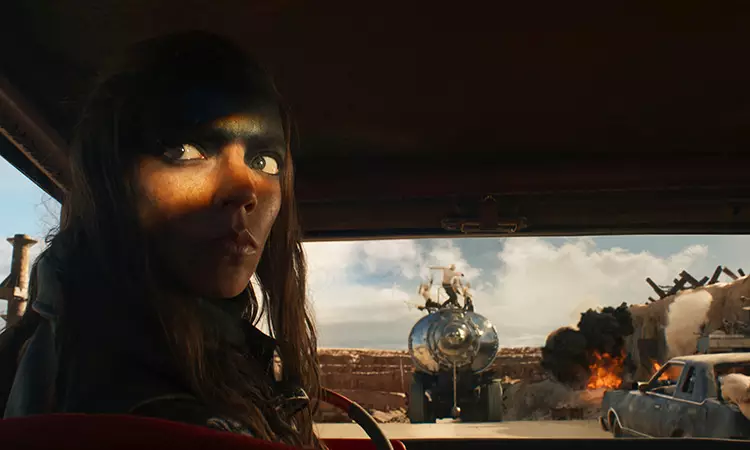The much-anticipated prequel to the Mad Max franchise, focusing on the origin story of Imperator Furiosa, artfully relocates the high-octane terrain of its predecessors into an elaborate and segmented world. Unlike the unrelenting and frenetic pace of *Mad Max: Fury Road*, this new installment presents a more intricately layered narrative that, while captivating, occasionally stumbles due to structural pacing challenges. With Anya Taylor-Joy stepping into the pivotal role of the titular character, her performance promises a profound exploration of identity and resilience within an unforgiving dystopia.
One of the most significant aspects of this prequel is its nuanced portrayal of Furiosa as a child, brought to life by Alyla Brown. As she transitions into the adult embodiment of the character, Taylor-Joy’s portrayal provides a stark contrast to the chaos surrounding her—an intense environment dominated by men. The power dynamics are apparent, with the warlord Dementus, played by Chris Hemsworth, embodying the tyrannical force against which Furiosa must rebel. This depiction, while thrilling, reveals a missed opportunity; there just isn’t enough screen time dedicated to underpinning Furiosa’s journey. One wishes that the filmmakers had delved deeper into her character development, allowing the audience to witness the evolution of such a powerful figure.
Director George Miller harnesses markedly inventive cinematography, affording the film an almost poetic visual flair. The stunning long takes and surreal zoom techniques transport audiences into a world that feels both ancient and disturbingly modern. Layered with rich Biblical imagery, the plot unravels themes of paradise lost, sacrificial undertones, and the construction of a new, female-centered mythology. While *Fury Road* celebrated feminine energy through its ensemble cast, *Furiosa* juxtaposes this by heavily infusing the narrative with motifs of violence, highlighting the way women navigate and survive in a male-dominant landscape.
What undoubtedly stands out, however, is the screenplay’s articulation of Furiosa’s internal struggle. A transformative moment occurs when she articulates a powerful monologue reflecting on grief and lost time. This scene encapsulates her character’s intense emotional trajectory, effectively resonating with the audience. The juxtaposition between her inherent softness and the brutal environment creates a compelling and poignant narrative arc. The introduction of characters like Praetorian Jack, portrayed by Tom Burke, adds further complexity to her motivations, enriching the storytelling.
While *Furiosa* endeavors to carve out a unique narrative within a beloved franchise, it does so with certain flaws—most notably in pacing and character accessibility. Views of the dystopian wasteland can scream for attention, but the depth often gets overshadowed by action sequences. The film strives to grapple with societal themes and historical echoes, yet these aspirations may not fully translate into a uniformly impactful experience for all viewers. Despite these shortcomings, the audacious attempt and captivating performances warrant its place in the larger Mad Max framework, ensuring that both action aficionados and narrative seekers can find something to appreciate within its chaotic landscape. In this way, *Furiosa* serves as both a homage and a new chapter, echoing the cries of countless women seeking autonomy and strength in the face of adversity.

